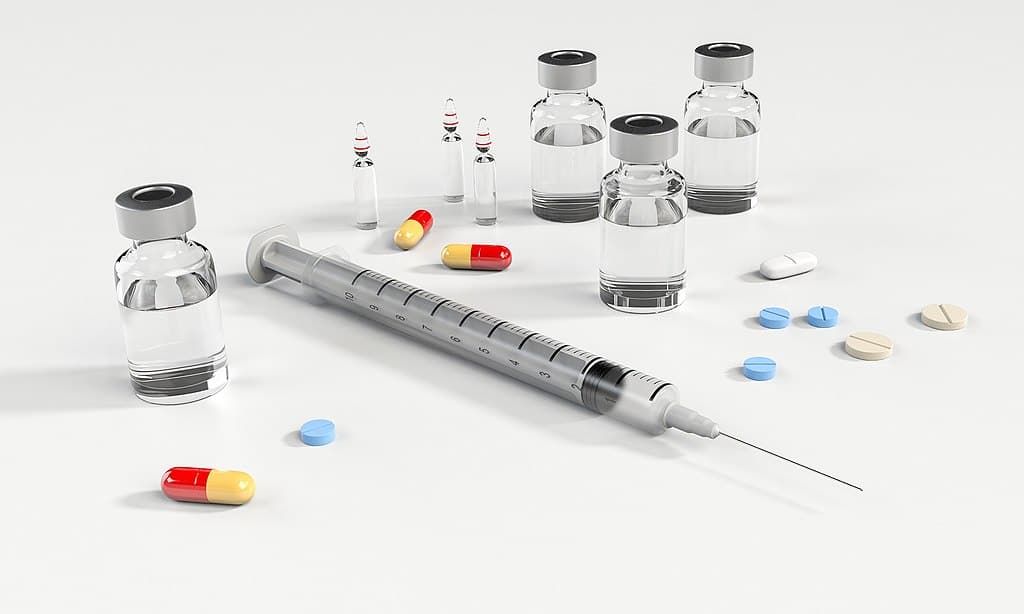

A once-daily weight loss pill that mimics the effects of popular injectable drugs like Ozempic and Wegovy could soon hit the market.
Eli Lilly’s experimental oral medication, orforglipron, has shown promising results in clinical trials, offering a potentially easier and more affordable way to treat obesity and type 2 diabetes.
In a recent study, participants taking orforglipron lost up to 14.7% of their body weight over 36 to 40 weeks – comparable to results seen with semaglutide injections.
The company plans to seek regulatory approval for the pill as an obesity treatment by the end of 2025, followed by a diabetes indication in 2026.
Injectable GLP-1 receptor drugs such as Ozempic and Wegovy have reshaped the treatment landscape for obesity and type 2 diabetes. These medications help lower blood sugar and curb appetite by mimicking a hormone in the body.
But they come with challenges. They’re expensive to manufacture, require refrigeration, and must be injected, making daily use inconvenient for many patients.
These limitations stem from their peptide-based structure, which breaks down in the digestive system and can’t be delivered effectively as pills.
Orforglipron, by contrast, is a small-molecule drug. It can be taken orally, is more stable, and is cheaper to produce, potentially widening access to effective weight loss therapies.
Eli Lilly is one of several pharmaceutical companies racing to bring an oral GLP-1 drug to market. Pfizer and Roche have also invested in similar projects. But the path forward has not been smooth for all.
Pfizer recently halted development of its candidate, danuglipron, after a clinical trial participant showed signs of possible liver damage.
The condition resolved after stopping the drug. Pfizer said it will continue pursuing other small-molecule treatments for obesity.
A breakthrough came in 2017, when researchers mapped the GLP-1 receptor using cryogenic electron microscopy. This allowed scientists to visualize how drugs bind to the receptor and use computer modeling to simulate potential matches.
That advancement helped Lilly design orforglipron to attach effectively to the same pocket as the natural hormone, triggering the same effects without injections.
Companies like Septerna Therapeutics are also studying new binding sites on the receptor that could lead to fewer side effects, such as nausea and vomiting. “Small molecules targeting novel binding sites might potentially offer improved tolerability,” said Septerna CEO Jeff Finer, though more research is needed.
Beyond GLP-1, researchers are exploring ways to target other metabolic receptors involved in blood sugar control and appetite, including GIP and glucagon receptors.
Lilly’s injectable tirzepatide (marketed as Mounjaro and Zepbound), which targets both GLP-1 and GIP, has already shown greater weight-loss results than semaglutide and is approved in the U.S. for both diabetes and obesity.
Building pills that work on multiple receptors, however, is no easy task. But new discoveries – like Septerna’s binding pocket, which shares up to 90% of its genetic makeup with related receptors – are opening new possibilities.
Ambrosia is taking a modular approach, developing separate pills for each receptor. This could allow doctors to tailor treatments to individual patients, potentially reducing side effects.
As science advances, researchers believe oral weight loss pills could soon join injectables as a major option for patients. But they are unlikely to replace injections altogether.
“The enormity of the patient population affected by obesity and diabetes—estimated to be more than 800 million people worldwide—suggests there’s room for multiple therapeutic approaches,” said Finer.
If regulators give the green light, orforglipron could become the first of a new class of oral drugs that offer the benefits of current GLP-1 therapies – without the needle.
